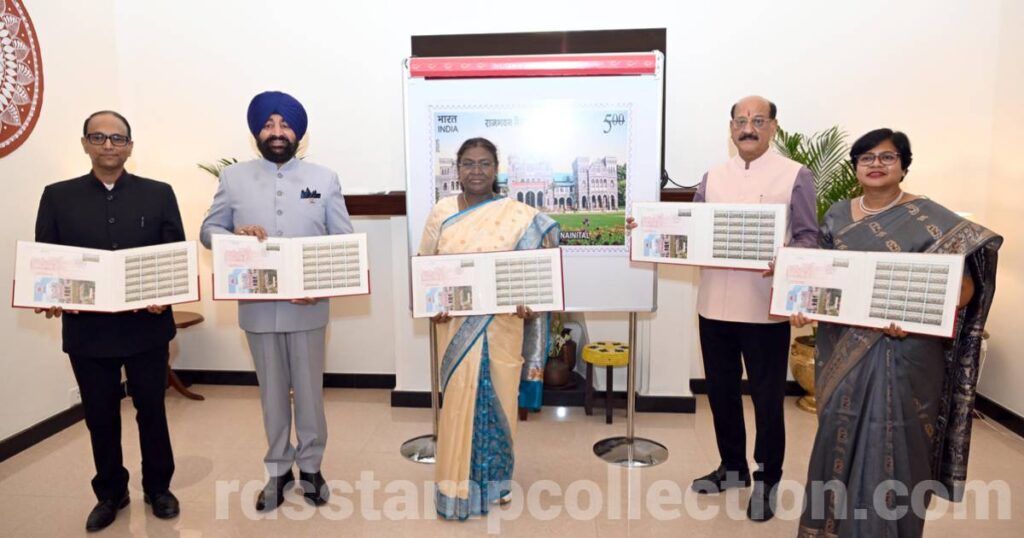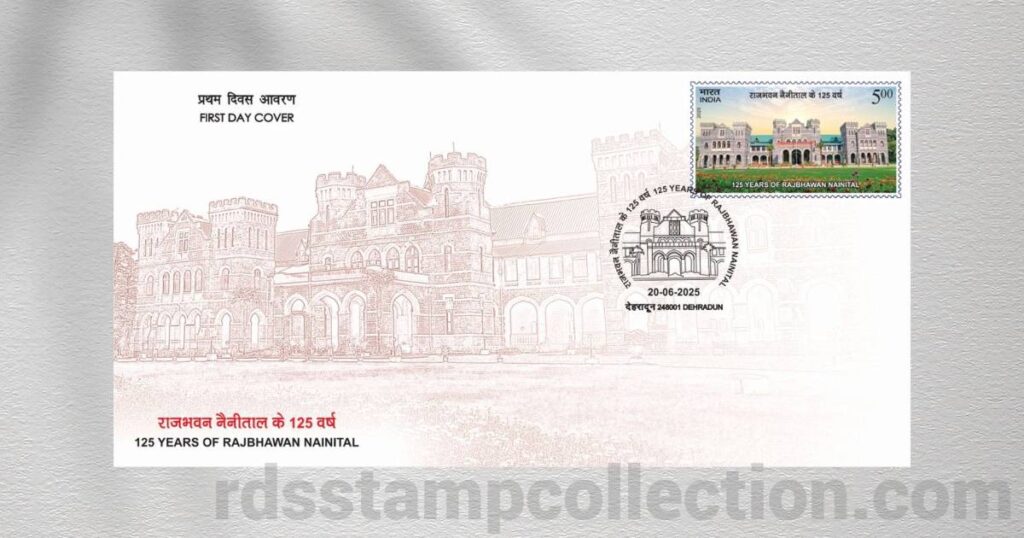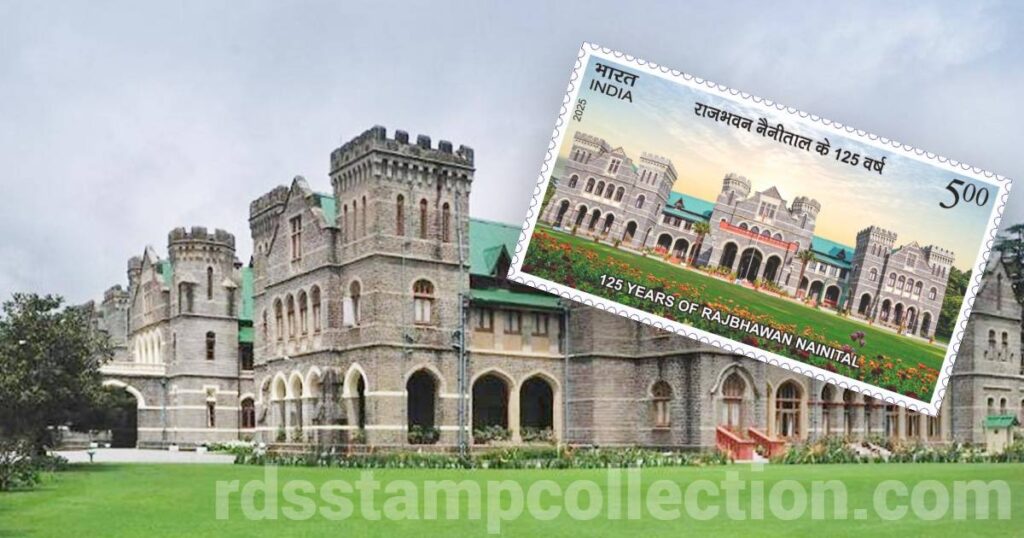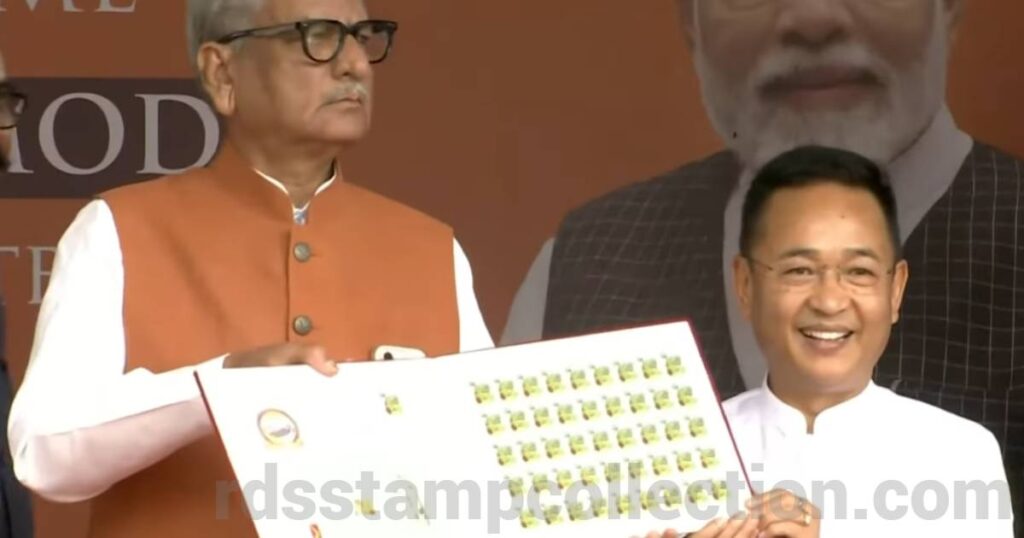Nestled amidst the tranquil hills of Nainital, Uttarakhand, the Raj Bhavan stands as a majestic reminder of India’s rich colonial past. Recently honoured by India Post with a special commemorative stamp, this landmark reflects an exceptional blend of architectural beauty, historical significance, and natural splendor.
Historical Legacy

Raj Bhavan, originally called “Government House,” dates back to the British colonial era. Built as the summer residence for British Governors, construction began on April 27, 1897, and concluded in March 1900. Renowned architect F.W. Stevens designed the building, with executive engineer F.O.W. Ortel supervising the project. Covering 220 acres, the grand two-story mansion houses 113 elegantly designed rooms. It is crafted using local stones finished in Ashlar style, complemented beautifully by Burma teak and other teak varieties.
During the pre-independence era, Raj Bhavan hosted British Governors such as Sir Antony MacDonnell, Sir James, Sir John Misten, and Sir Harcourt Butler. Post-independence, it gained significance as the residence of Smt. Sarojini Naidu, the first Governor of Uttar Pradesh.
Architectural Brilliance
Raj Bhavan’s architectural style showcases Victorian Gothic influences, resembling a Scottish castle. Notable features include intricate woodwork, gracefully arched windows, and sharply pitched roofs. Its elegant European design enhances its historic charm, attracting visitors who appreciate architecture and history.
Natural Beauty and Leisure
Surrounded by around 160 acres of dense forest, Raj Bhavan offers visitors serene natural beauty. The lush greenery is home to diverse flora and fauna, creating a peaceful ambiance perfect for nature lovers. Another highlight is the vintage golf course established in 1936. Spanning 45 acres, it is among India’s oldest courses, affiliated with the Indian Golf Union. Visitors can enjoy golfing by paying a small fee, adding leisure to the historic exploration.
Public Accessibility and Cultural Significance
Today, Raj Bhavan serves as the official residence for the Governor of Uttarakhand during visits to Nainital. However, its doors are open to the public for guided tours. Tourists can explore select areas, appreciating the historical context and architectural beauty. The estate also boasts sprawling lawns, a meticulously maintained bonsai garden, and diverse floral species, enhancing its appeal to visitors.
Commemorative Stamp Release

Marking its 125th anniversary, President Droupadi Murmu released a commemorative postage stamp on June 20, 2025, at Rashtrapati Niketan, Dehradun. Uttarakhand’s Governor Lt Gen Gurmit Singh (Retd) attended the event, celebrating the iconic structure’s historical and architectural significance. The commemorative stamp symbolizes Raj Bhavan’s timeless charm, ensuring its legacy endures.


During the event, the Governor presented President Murmu a coffee table book, “Ek Bharat – Shreshtha Bharat,” highlighting celebrations of State and Union Territory Formation Days at Raj Bhavan. This gesture underscored the estate’s role in fostering national unity and pride.
Quick Facts:
- Built: April 27, 1897 – March 1900
- Architects: F.W. Stevens and F.O.W. Ortel
- Area: 220 acres (160 acres forest, 45 acres golf course)
- Rooms: 113 rooms
- Architectural Style: Victorian Gothic
- Golf Course: Established in 1936, affiliated with Indian Golf Union
- Notable Residents: British Governors, Smt. Sarojini Naidu
- Commemorative Stamp Release: June 20, 2025
Conclusion
Raj Bhavan, Nainital, is an iconic landmark encapsulating India’s historical heritage and natural beauty. Its recent commemorative postage stamp ensures its magnificent story continues to inspire visitors. Whether you are drawn to history, architecture, or nature, Raj Bhavan offers a memorable journey into India’s colonial legacy, beautifully preserved in the hills of Nainital.


